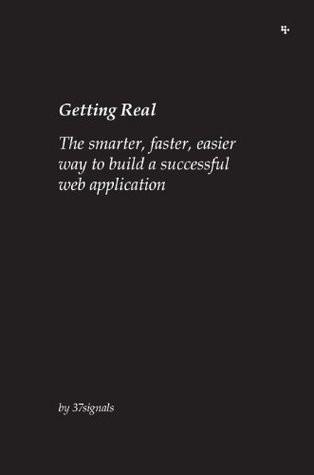
Getting Real
by
Jason Fried
,
David Heinemeier Hansson
,
Matthew Linderman
and
37 Signals
Published 1 Jan 2006
I think Jobs is keenly aware of the importance of first impressions...I think Jobs looks at the first-run experience and thinks, it may only be one-thousandth of a user's overall experience with the machine, but it's the most important onethousandth, because it's the first one-thousandth, and it sets their expectations and initial impression. —John Gruber, author and web developer (from Interview with John Gruber) Table of contents | Essay list for this chapter | Next essay Get Defensive Design for when things go wrong Let's admit it: Things will go wrong online. No matter how carefully you design your app, no matter how much testing you do, customers will still encounter problems.
…
Thomas Weber of the Wall Street Journal said it's the best product in its class and David Pogue of the New York Times called it a "very cool" organization tool. Writeboard lets you write, share, revise, and compare text solo or with others. It's the refreshing alternative to bloated word processors that are overkill for 95% of what you write. John Gruber of Daring Fireball said, "Writeboard might be the clearest, simplest web application I've ever seen." Web-guru Jeffrey Zeldman said, "The brilliant minds at 37signals have done it again." Ta-da List keeps all your to-do lists together and organized online. Keep the lists to yourself or share them with others for easy collaboration.

Design for Hackers: Reverse Engineering Beauty
by
David Kadavy
Published 5 Sep 2011
They’re usually designed to have large counters, or are otherwise simplified to maintain the readability of the type at smaller sizes – attributes that looks less than flattering when displayed at larger sizes. You can see this in action in Figure A-11, which features John Gruber’s website, www.daringfireball.net. The larger portions of type – the titles of blog posts and the menu items, for example – are displayed in a more nuanced face, Gill Sans. Although the menu item faces aren’t very large, Gill Sans still wouldn’t read as well in body copy, so Verdana is used instead. Figure A-11 John Gruber’s website uses Verdana for readable body copy and Gill Sans for more interesting headers. Copyright © 2002–2011 John Gruber But this pairing is no accident. Verdana has a humanist letter structure that is quite similar to that of Gill Sans.

Digital Wars: Apple, Google, Microsoft and the Battle for the Internet
by
Charles Arthur
Published 3 Mar 2012
They’re easy to update; just update it on your server. The silence was almost threatening. The audience knew they were being short-changed. Apple’s developers, after all, had obviously written apps, and Jobs had boasted about the software. So clearly APIs existed. And an SDK must exist for the developers to have written the apps. Afterwards John Gruber, an independent (and professional) blogger whose Daring Fireball site is regarded as a nexus for thinking about Apple (and other) news, called the suggestion ‘insulting, because it’s not a way to write iPhone apps’,34 and said that developers could not be fooled. Jobs, he suggested, should just have said that Apple was working on it but did not have anything to announce yet.
…
You could run Windows 7 on a tablet, but the experience was dire: icons were too small, and fingers too large to operate the standard Windows interface. Ahead of the launch, Apple’s detractors lost no time in pointing out that Microsoft had tried tablet PCs, and they sold about a million per year, so Apple – with an even tinier share of the PC market – was clearly on course to sell only a few thousand devices. John Gruber, a self-described raconteur (more precisely, a Philadelphia-based blogger who has developed wide and deep connections inside and around Apple), responded: ‘The hype isn’t about Apple possibly unveiling the first tablet computing device; it’s about Apple possibly unveiling the first great one.’5 Third category A few weeks later, with CES all but forgotten, Steve Jobs took the stage at the Yerba Buena Center in San Francisco to announce a new product – the iPad.
…
Stripping out what is unnecessary, and improving what is left to the best possible. Even before Jobs left, Apple had an enormous internal project, called the Apple University, to educate its staff in how the most effective traits of the company could be promulgated, refined and reproduced. Even without Jobs, his spirit would still live on inside the company. As John Gruber put it, as he pondered the Apple co-founder’s goodbye, ‘Jobs’s greatest creation isn’t any Apple product. It is Apple itself.’ On 5 October, Jobs’s death was announced. Bill Gates was among the first to offer his condolences, and praise his long-time friend’s legacy: ‘The world rarely sees someone who has had the profound impact Steve has had, the effects of which will be felt for many generations to come.

Designing for Emotion
by
Aarron Walter
Published 4 Oct 2011
Most people don’t have a love/joy for software like geeks do. Users react with effusive emotion to these cartoony, yet seemingly tangible interfaces enhanced by robotic whirs, bleeps, and blips. You can certainly see the parallels with WALL•E, in physical and personality traits. Both are friendly, endearing, and reliable. Technology blogger John Gruber sums up audience sentiment about Tapbots apps with this simple review (http://bkaprt.com/de/6): I adore the way their apps look and sound. Ironically, Gruber doesn’t even mention the apps’ functionality, though his appreciation of it is implied. He uses the word “adore.” Gruber doesn’t just like these apps; he loves them.

The Metaverse: And How It Will Revolutionize Everything
by
Matthew Ball
Published 18 Jul 2022
And Apple uses its control over its App Store to prevent competing browsers on its iOS devices. This may be surprising if you regularly use Chrome on your iPhone or iPad. However, these are really just the “iOS system version of [Apple’s Safari] WebKit wrapped around Google’s own browser UI,” according to the Apple expert John Gruber, and the iOS Chrome app [cannot] “use the Chrome rendering or JavaScript engines.” What we think of as Chrome on iOS is simply a variant of Apple’s own Safari browser, but one that logs into Google’s account system.§10 Because Safari underpins all iOS browsers, Apple’s technical decisions for its browser define what the nominally “open web” can and cannot offer developers and users.
…
Adi Robertson, “Tim Cook Faces Harsh Questions about the App Store from Judge in Fortnite Trial,” The Verge, May 21, 2021, accessed January 5, 2022, https://www.theverge.com/2021/5/21/22448023/epic-apple-fortnite-antitrust-lawsuit-judge-tim-cook-app-store-questions. 9. Nick Wingfield, “IPhone Software Sales Take Off: Apple’s Jobs,” Wall Street Journal, August 11, 2008. 10. John Gruber, “Google Announces Chrome for iPhone and iPad, Available Today,” Daring Fireball, June 28, 2021, accessed January 4, 2022, https://daringfireball.net/linked/2012/06/28/chrome-ios. 11. Kate Rooney, “Apple: Don’t Use Your iPhone to Mine Cryptocurrencies,” CNBC, June 11, 2018, accessed January 4, 2021, https://www.cnbc.com/2018/06/11/dont-even-think-about-trying-to-bitcoin-with-your-iphone.html. 12.

Design Is a Job
by
Mike Monteiro
Published 5 Mar 2012
Do you become a well-sought consultant where you only work six months of the year out of your swank modernist home in the hills? The choice is yours. But I’d caution you to stay away from jobs that take you away from the thing you love to do, which is to design things. Although your definition of “designing things” may change. My friend John Gruber once said that Steve Jobs’ greatest accomplishment wasn’t designing any particular Apple product—it was designing Apple itself. At some point you may get to the point where you’re no longer designing specific products, or specific websites, but instead helping to design the teams that design those things.

The Complete Android Guide: 3Ones
by
Kevin Purdy
Published 15 Apr 2011
Sign up at appbrain.com (which signs you in through your Google account), download the app, and you can then browse AppBrain's better-organized web market, install apps in bulk, share a list of your current apps with friends, and go a step further with the Fast Web Installer, an app that, once installed and activated online, lets you click a button and have an app instantly download to your phone. (Free) Dropbox Dropbox To paraphrase John Gruber at the Daring Fireball blog, the only people not using Dropbox are probably those who haven't heard of it, or gotten around to installing it. Every sign-up gets 2 GB of free space on Dropbox's servers, which then exists as a kind of magic folder on any computer or smartphone. So Dropbox is great for instantly getting files from your computer to your Android phone, but it's even better at stashing content right from your phone.
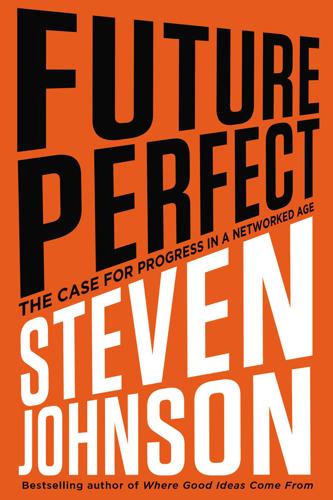
Future Perfect: The Case for Progress in a Networked Age
by
Steven Johnson
Published 14 Jul 2012
In the old days, it might have taken months for details from a John Sculley keynote to make it to the College Hill Bookstore; now the lag is seconds, with dozens of people live-blogging every passing phrase from a Steve Jobs or Tim Cook speech. There are 8,000-word dissections of each new release of OS X at the technological site Ars Technica, written with attention to detail and technical sophistication that far exceed anything a traditional newspaper would ever attempt. Writers such as John Gruber and Donald Norman regularly post intricate critiques of user-interface issues. The traditional newspapers have improved their coverage as well: think of David Pogue’s reviews in The New York Times, or Dow-Jones’s extended technology site, AllThingsD. And that’s not even mentioning the rumor blogs.

Content Everywhere: Strategy and Structure for Future-Ready Content
by
Sara Wachter-Boettcher
Published 28 Nov 2012
The Lowdown on Markdown Just because your content needs markup, that doesn’t mean you or those working in your content management system necessarily need to be able to write it, or even that you must use separate fields to distinguish every little bit of content from the others. Instead, some organizations are experimenting with crafting their content in markdown—a lightweight alternative to using HTML to give content shape that was created by John Gruber of Daring Fireball fame. Unlike full HTML, markdown allows authors to write in a standardized but natural language that can be easily read and understood not just by computers, but by humans as well. For example, instead of the <h1> tag used in HTML, you can simply use a single hash mark to denote a heading: # This text is an H1 Meanwhile, subheadings are made just by adding additional hash marks, like so: ## This text is an H2 ##### This text is an H5 No need to close brackets or fuss with backslashes.

I Live in the Future & Here's How It Works: Why Your World, Work, and Brain Are Being Creatively Disrupted
by
Nick Bilton
Published 13 Sep 2010
People like Carr and Bittman have a clear platform for their views, but we’re also seeing “no names” build big brands around their big personalities—people who anoint themselves and then build their trust level by delivering content that is valued. If you’re an Apple computer enthusiast, you surely will have heard of John Gruber, a Mac expert and writer. He isn’t associated with any big-name news outlets or magazines, but he has built a loyal subscriber base with his website daringfireball.com. He is the sole employee and makes a very healthy six-figure income by selling ads on his site and giving talks to companies. Gary Vaynerchuk, a bigger-than-blogger personality, developed Wine Library TV, his own online network of wine reviews and ratings, which claims 80,000 viewers a day.
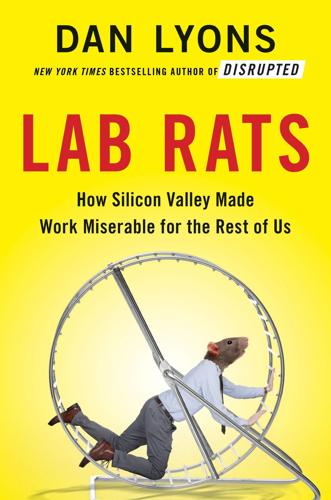
Lab Rats: How Silicon Valley Made Work Miserable for the Rest of Us
by
Dan Lyons
Published 22 Oct 2018
“Fuck that, fuck you, fuck this, this is bullshit” is how a top Apple engineering executive reportedly responded when he was shown the floor plans of the company’s $5 billion ring-shaped “spaceship” headquarters in Cupertino, California, and realized his group would be put into open-office spaces. “Fuck this, my team isn’t working like this,” he said. Because his engineers are vital to the company—they design the chips that power the iPhone—Apple built a separate building for them, where they would not have to use the open-office plan, according to John Gruber, a blogger with tight connections at Apple. The open-plan arrangement isn’t just unpleasant. Researchers say open offices can make people stressed out and physically sick. Open offices might even be harming our brains. A Cornell study found workers in noisy open offices had elevated levels of epinephrine, also known as adrenaline, after only three hours of exposure.
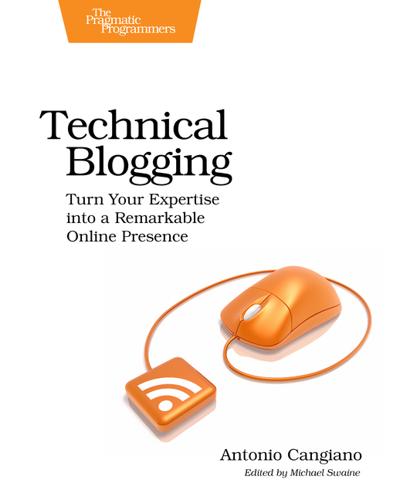
Technical Blogging: Turn Your Expertise Into a Remarkable Online Presence
by
Antonio Cangiano
Published 15 Mar 2012
But they really boil down to either providing commentary or giving actual technical instructions (or a mix of both). A pundit blog showcases an author’s insights into an industry or a particular niche. It is typically filled with essays on relevant topics or quotes from other interesting blogs and news stories to which an opinion is added. The perfect example of a pundit who mostly blogs about Apple is John Gruber and his popular blog, Daring Fireball.[11] An instructional blog focuses on HOWTOs. The aim of this type of blog is to provide tutorials or reference material for readers. There may be an opinion here and there, but these are mostly a collection of factual posts. For an example, check out igvita.com (a screenshot of which is shown within the introduction to this book).[12] Which one should you choose?
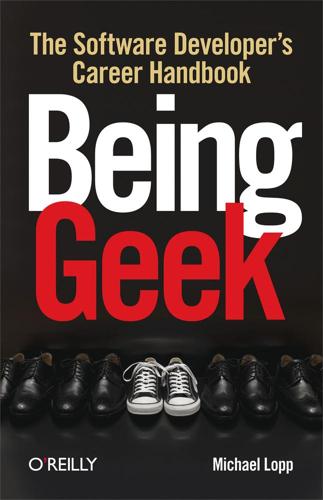
Being Geek: The Software Developer's Career Handbook
by
Michael Lopp
Published 20 Jul 2010
O'Reilly Media * * * Dedication To Spencer and Claire. My daily reminders of the value of caring about someone deeply. Praise for Being Geek "Michael Lopp is that rare beast: the completely honest manager who uses plain language. You want to know how to cultivate a thriving career in this industry? Listen to Lopp." John Gruber, Daring Fireball "I've seen too many people who were technically brilliant but who you didn't want to let out of a locked room, because you knew they'd get eaten alive in the real world. Being Geek gives them a fighting chance to adapt to corporate life and manage the 'messy parts' of real life."
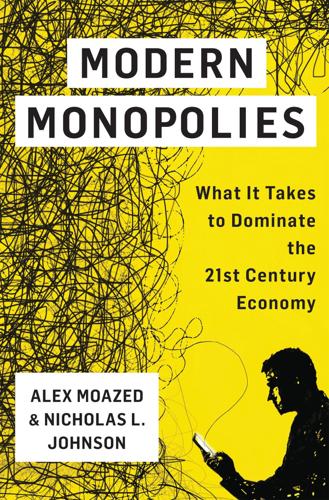
Modern Monopolies: What It Takes to Dominate the 21st Century Economy
by
Alex Moazed
and
Nicholas L. Johnson
Published 30 May 2016
App Store and Google Play statistics can be found at http://www.statista.com. 17. Quoted in Erick Shonfeld, “RIM CEO Jim Balsillie To Steve Jobs: ‘You Don’t Need An App For The Web,’” Techcrunch, November 16, 2010, http://techcrunch.com/2010/11/16/rim-ceo-balsillie-jobsapp-web/. 18. John Gruber, “WWDC 2007 Keynote News,” June 11, 2007, http://daringfireball.net/2007/06/wwdc_2007_keynote. 19. Quoted in Jonathan S. Geller, “Open Letter to BlackBerry Bosses: Senior RIM Exec Tells All as Company Crumbles Around Him,” June 30, 2011, http://bgr.com/2011/06/30/open-letter-to-blackberry-bosses-senior-rim-exec-tells-all-as-company-crumbles-around-him/. 20.
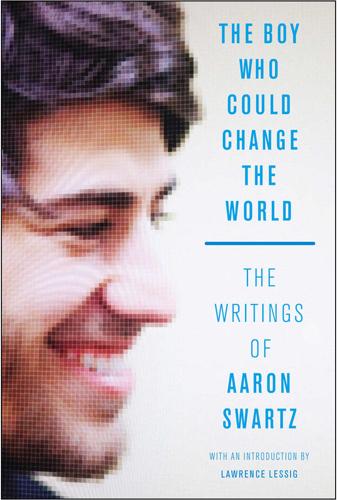
The Boy Who Could Change the World: The Writings of Aaron Swartz
by
Aaron Swartz
and
Lawrence Lessig
Published 5 Jan 2016
He wanted openness, debate, rationality, and critical thinking, and he refused to cut corners—even at the age of thirteen. RSS itself was fundamentally about sharing, taking the content out of its presented form on a website and allowing it to be redistributed and aggregated by other individuals and entities. Another of Swartz’s projects, the webpage authoring tool Markdown (2004, co-designed with John Gruber), was a lightweight tool to easily generate webpages and blogposts by turning marked-up text into HTML. Both point to one of Swartz’s central driving passions: making the creation, distribution, and freedom of information as easy and frictionless as possible. Swartz’s technical skills were obviously superior, but what differentiated him from most programmers, even some of the greatest open-source gurus, was the way he went about his technical projects.
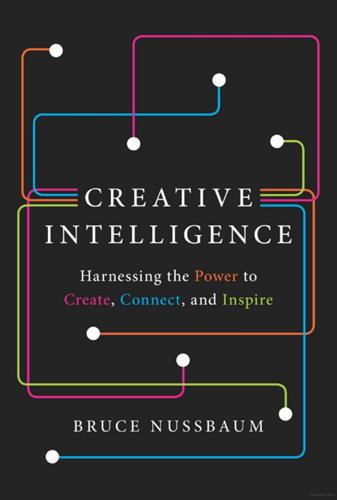
Creative Intelligence: Harnessing the Power to Create, Connect, and Inspire
by
Bruce Nussbaum
Published 5 Mar 2013
It had music by the Franks, some speed editing, and a lot of honesty. Provost and Gerhardt asked people to pledge $10,000 to begin making the Glif. To their amazement, they raised the entire $10,000 in just over an hour after Daring Fireball, a website hosted by tech maven and one of the most powerful Apple commentators, John Gruber, ran the video. And the money kept pouring in. They had expected maybe four or five hundred orders, but in the end, they received $137,417 for five thousand preorders from 5,273 “backers.” The top sites for generating business were Kickstarter, their own site, Google, Facebook, Daring Fireball, TUAW (The Unofficial Apple Weblog), Twitter, and the Economist.

Custodians of the Internet: Platforms, Content Moderation, and the Hidden Decisions That Shape Social Media
by
Tarleton Gillespie
Published 25 Jun 2018
See also “Average App Store Review Times,” http://appreviewtimes.com/. 25Laura McGann, “Mark Fiore Can Win a Pulitzer Prize, but He Can’t Get his iPhone Cartoon App Past Apple’s Satire Police,” Nieman Lab, April 15, 2010. http://www.niemanlab.org/2010/04/mark-fiore-can-win-a-pulitzer-prize-but-he-cant-get-his-iphone-cartoon-app-past-apples-satire-police/. 26Gabe Jacobs, “Bushisms iPhone App Rejected,” Gabe Jacobs Blog, September 13, 2008, http://www.gabejacobsblog.com/2008/09/13/bushisms-iphone-app-rejected/ (no longer available online); Alec, “Freedom Time Rejected by Apple for App Store,” Juggleware Dev Blog, September 21, 2008, https://www.juggleware.com/blog/2008/09/freedomtime-rejected-by-apple-for-app-store/. 27Robin Wauters, “Apple Rejects Obama Trampoline iPhone App, Leaves Us Puzzled,” TechCrunch, February 7, 2009, http://techcrunch.com/2009/02/07/apple-rejects-obama-trampoline-iphone-app-leaves-us-puzzled/; Don Bora, “Rejected App (Biden’s Teeth),” Eight Bit Blog, June 6, 2009, http://blog.eightbitstudios.com/rejected-app. 28“iSinglePayer iPhone App Censored by Apple,” Lambda Jive, September 26, 2009, http://lambdajive.wordpress.com/2009/09/. 29Alec, “Steve Jobs Responds,” Juggleware Dev Blog, September 23, 2008, http://www.juggleware.com/blog/2008/09/steve-jobs-writes-back/. 30Ryan Singel, “Jobs Rewrites History about Apple Ban on Satire,” Wired, June 3, 2010, https://www.wired.com/2010/06/jobs-apple-satire-ban/. 31Alexia Tsotsis, “WikiLeaks iPhone App Made $5,840 before Pulled by Apple, $1 From Each Sale Will Be Donated to WikiLeaks,” TechCrunch, December 22, 2010, https://techcrunch.com/2010/12/22/wikileaks-2/. 32Rebecca Greenfield, “Apple Rejected the Drone Tracker App Because It Could,” Atlantic, August 30, 2012, https://www.theatlantic.com/technology/archive/2012/08/apple-rejected-drone-tracker-app-because-it-could/324120/. 33Ryan Chittum, “Apple’s Speech Policies Should Still Worry the Press,” Columbia Journalism Review, April 20, 2010, http://www.cjr.org/the_audit/apples_speech_policies_should.php. 34Charles Christensen, “iPad Publishing No Savior for Small Press, LGBT Comics Creators,” Prism Comics, June 2010, http://prismcomics.org/display.php?id=1858 (no longer available online). 35John Gruber, “Ninjawords: iPhone Dictionary, Censored by Apple,” Daring Fireball, August 4, 2009, https://daringfireball.net/2009/08/ninjawords; John Gruber, “Phil Schiller Responds Regarding Ninjawords and the App Store,” Daring Fireball, August 6, 2009, https://daringfireball.net/2009/08/phil_schiller_app_store; Ryan Chittum, “Apple’s Controlling Instincts Censor Ulysses All Over Again,” Columbia Journalism Review, June 11, 2010, http://archives.cjr.org/the_audit/apples_controlling_instincts_c.php; James Montgomerie, “Whither Eucalyptus?”

Chokepoint Capitalism
by
Rebecca Giblin
and
Cory Doctorow
Published 26 Sep 2022
Order Granting in Part and Denying in Part Motion for Preliminary Injunction, Epic Games, Inc. v. Apple Inc., 4:20-cv-05640-YGR, Dkt. No. 61 (N.D. Cal. Oct. 9, 2020), https://cdn.vox-cdn.com/uploads/chorus_asset/file/21949772/gov.uscourts.cand.364265.118.0.pdf. 14. Epic Games v. Apple. 15. Epic Games v. Apple. 16. John Gruber, “Kara Swisher: ‘Is It Finally Hammer Time for Apple and Its App Store?’” Daring Fireball, June 19, 2020, https://daringfireball.net/linked/2020/06/19/swisher-app-store-hey; Kara Swisher, “Is It Finally Hammer Time for Apple and Its App Store?” New York Times, June 19, 2020, https://www.nytimes.com/2020/06/19/opinion/apple-app-store-hey.html; Ben Thompson, “Hey v.
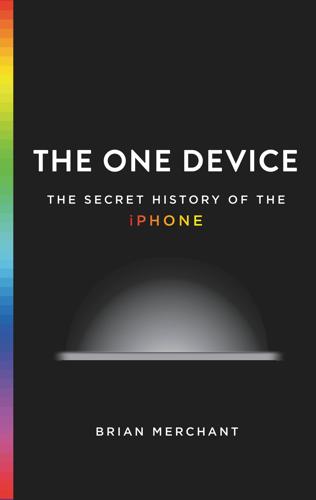
The One Device: The Secret History of the iPhone
by
Brian Merchant
Published 19 Jun 2017
So, just weeks before the release of the first iPhone, at Apple’s annual developer’s conference in San Francisco, Jobs announced that they would be doing apps after all—kind of. Using the Safari engine, they could write web 2.0 apps “that look exactly and behave exactly like apps on the iPhone.” John Gruber, perhaps the best-known Apple blogger and a developer himself, explained that the “message went over like a lead balloon.” Indeed. “You can’t bullshit developers.… If web apps—which are only accessible over a network; which don’t get app icons in the iPhone home screen; which don’t have any local data storage—are such a great way to write software for iPhone, then why isn’t Apple using this technique for any of their own iPhone apps?”